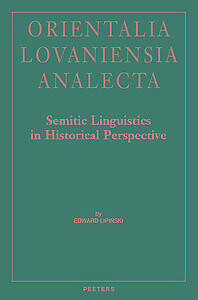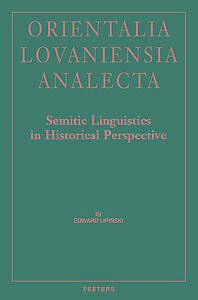
- Afhalen na 1 uur in een winkel met voorraad
- Gratis thuislevering in België vanaf € 30
- Ruim aanbod met 7 miljoen producten
- Afhalen na 1 uur in een winkel met voorraad
- Gratis thuislevering in België vanaf € 30
- Ruim aanbod met 7 miljoen producten
Zoeken
Omschrijving
The present work is conceived as a companion volume to the author's Semitic Languages. Outline of a Comparative Grammar. Its purpose is to show the birth and development of Semitic linguistics in broad lines, but also to pay a closer attention to languages which have played a minor role in the Comparative Grammar, while they are actively studied at present, viz. Middle Aramaic, Mandaic, Neo-Aramaic. Suggestions are also made for a renewed research on some conjugation forms in Old Aramaic, Classical Hebrew, Ugaritic, Epigraphic Southern Arabian, also Beja, whose links with Semitic are stronger than often assumed. Attention is paid to the existence of a continued aspect beside the performed one and the not (yet) performed, also to the relations between Old Egyptian and Semitic, especially in the question of the correspondence of the consonants in earlier periods. Finally, the traces of an ergative grammatical system are underscored, not only in Semitic, but even more in Libyco-Berber, the Afro-Asiatic phylum which is nearest to Semitic, and closer attention is paid to research in the field of Proto-Semitic roots, apparently monosyllabic.
Specificaties
Betrokkenen
- Auteur(s):
- Uitgeverij:
Inhoud
- Aantal bladzijden:
- 725
- Taal:
- Engels
- Reeks:
- Reeksnummer:
- nr. 230
Eigenschappen
- Productcode (EAN):
- 9789042930209
- Verschijningsdatum:
- 24/04/2014
- Uitvoering:
- Hardcover
- Formaat:
- Genaaid
- Afmetingen:
- 170 mm x 244 mm
- Gewicht:
- 1496 g

Alleen bij Standaard Boekhandel
+ 190 punten op je klantenkaart van Standaard Boekhandel
Beoordelingen
We publiceren alleen reviews die voldoen aan de voorwaarden voor reviews. Bekijk onze voorwaarden voor reviews.











